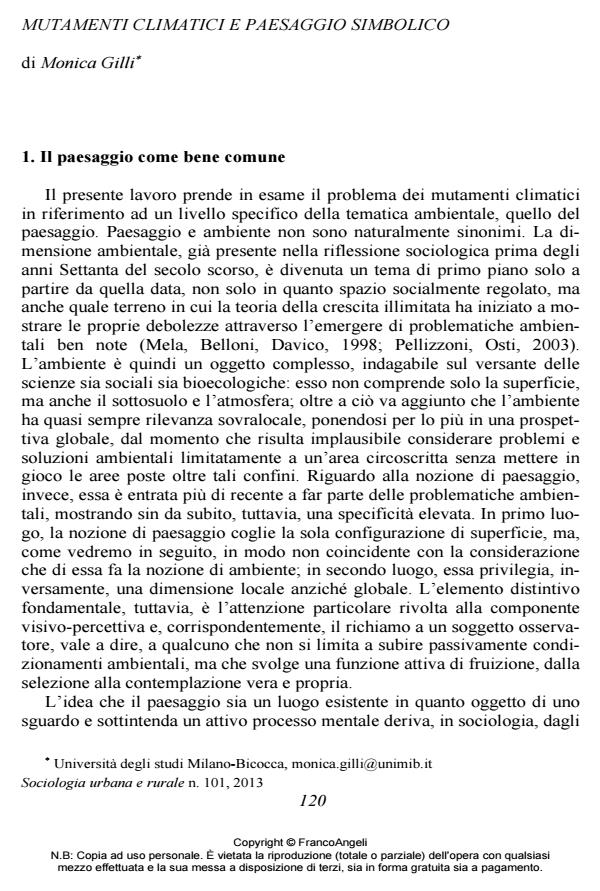Climate Change and Symbolic Landscape
Journal title SOCIOLOGIA URBANA E RURALE
Author/s Monica Gilli
Publishing Year 2013 Issue 2013/101
Language Italian Pages 15 P. 120-134 File size 226 KB
DOI 10.3280/SUR2013-101010
DOI is like a bar code for intellectual property: to have more infomation
click here
Below, you can see the article first page
If you want to buy this article in PDF format, you can do it, following the instructions to buy download credits

FrancoAngeli is member of Publishers International Linking Association, Inc (PILA), a not-for-profit association which run the CrossRef service enabling links to and from online scholarly content.
Climate changes affect not only the natural landscapes, but also the symbolic landscapes, i.e. those entities that landscape, thanks to countless cultural contributions have become "icons". This paper discusses two components present in many symbolic landscapes - the blanket of ice and perennial snow and water - which proved to be particularly sensitive to these changes, and put forward some hypotheses on social reactions to "degrading" resulting visually.
Keywords: Symbolic Landscape, Water, Icons, Climate Change, Place Identity, Tourism
Monica Gilli, Mutamenti climatici e paesaggio simbolico in "SOCIOLOGIA URBANA E RURALE" 101/2013, pp 120-134, DOI: 10.3280/SUR2013-101010